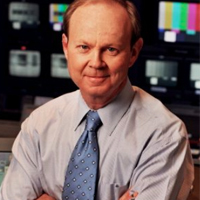BY MIKE MAGEE
Medicine does not exist in a vacuum. The trusting relationships that underpin it function within an ever-changing environment of shifting social determinants. This is not new, nor surprising.
Consider for example the results of their 1851 survey of 12,400 men from the eight leading U.S. colleges had to be shocking. The AMA was only four years old at the time and being forced to acknowledge a significant lack of public interest in a physician’s services. This in turn had caused the best and the brightest to choose other professions. There it was in black and white. Of those surveyed, 26% planned to pursue the clergy, 26% the law, and less than 8% medicine.
It wasn’t that doctors with training (roughly 10% of those calling themselves “doctor” at the time) lacked influence. They had been influential since the birth of the nation. Four signers of the Declaration of Independence were physicians – Benjamin Rush, Josiah Bartlett, Lyman Hall, and Mathew Thorton. Twenty-six others were attendees at the Continental Congress. But making a living as a physician, that was a different story.
During the first half of the 19th century, the market for doctoring went from bad to worse. Economic conditions throughout a largely rural nation encouraged independent self-reliance and self-help. The politics of the day were economically liberal and anti-elitist, which meant that state legislatures refused to impose regulations or grant licensing power to legitimate state medical societies. Absent these controls, proprietary “irregular medical schools” spawned all manner of “doctors” explaining why 40,000 individuals competed for patients by 1850 – up from 5000 (of which only 300 had degrees) in 1790.
The ecology of 1850’s medicine couldn’t be worse. The marketplace was a perfect storm – equal parts stubborn self-reliance, absence of licensure to promote professional standards, diploma mills that showed little interest in scientific advancement, and massive unimpeded entry of low quality competitors.
The legitimate doctors in those early days saw 5 patients on a good day. Horse travel on poor roads, and the absence of remote systems for communication, meant doctors had to be summoned in person to attend a birth or injury. And patients lost a day’s work to travel all the way to town for a visit of questionable worth. The direct and indirect costs for both doctor and patient were unsustainable. As a result, most doctors had multiple careers to augment their income.
What saved the newborn AMA and the future of medical professionalism in the mid-19th century wasn’t scientific progress or political enlightenment, but ecology – the relations of doctors and patients to one another and their surroundings.
At the turn of the century, in 1800, only 6% of Americans lived in towns with a population of 2,500. With westward expansion, Manifest Destiny, forced relocation of native Americans, and slavery supported cotton and tobacco, that percentage reached only 15% by 1950. But the arrival of railroads and telegraph, canals, improved roads and steamboats transformed America. By 1890, 37% lived in cities. And that included doctors. Beginning in 1870, there was an exodus of doctors to cities in excess of the general population. In 1870, there were 177 doctors per 100,000 in large cities. By 1910 the number had grown to 241 per 100,000.
Congregating doctors in cities was a mixed blessing for the profession. It made contact easier to execute, allowing numbers of patients seen in a day to double and triple. But it also meant that more doctors (of widely different quality) would be competing for the relatively few patients who possessed the resources to pay fees for services.
The invention of the telephone was equally transformative. The first recorded local telephone network was in New Haven, CT in 1877. Soon after the Capitol Hill Drugstore in Hartford, CT, was linked to 21 local physicians. Not to be outdone, two years later, Dr. William Worrell Mayo connected his farmhouse in Rochester, Minnesota to the Geisinger and Newton drugstore in town. This made remote prescribing, as well as patient communications for emergencies and scheduling possible.
The telephone would soon be a pivotal organizing tool for fledgling medical societies attempting to improve medical education while eliminating “irregular doctors.” In 1877, Illinois led the way in reinstating medical boards, licensing of medical schools and physicians, and acknowledging the AMA.
The AMA’s focus now was on the promotion of professionalism, especially prohibitions on advertisement, and improving medical education and public health through sanitation, pasteurization of milk, and soon enough – replacing manure producing horses with new motor cars.
The AMA also wisely insisted that membership required physicians to first join their county and state medical branches. This created an AMA “Federation” with unprecedented geographic reach. In 1900, there were only 8,000 members. By 1910 the organization was 70,000 strong having captured 50% of all “regular” physicians.
Mike Magee is a Medical Historian and Author of CODE BLUE: Inside the Medical Industrial Complex.












